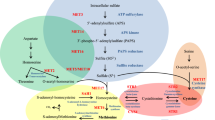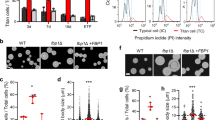Abstract
Yvh1 is a dual-specificity phosphatase (DUSP) that is evolutionarily conserved in eukaryotes, including yeasts and humans. Yvh1 is involved in the vegetative growth, differentiation, and virulence of animal and plant fungal pathogens. All Yvh1 orthologs have a conserved DUSP catalytic domain at the N-terminus and a zinc-binding (ZB) domain with two zinc fingers (ZFs) at the C-terminus. Although the DUSP domain is implicated in the regulation of MAPK signaling in humans, only the ZB domain is essential for most cellular functions of Yvh1 in fungi. This study aimed to analyze the functions of the DUSP and ZB domains of Yvh1 in the human fungal pathogen Cryptococcus neoformans, whose Yvh1 (CnYvh1) contains a DUSP domain at the C-terminus and a ZB domain at the N-terminus. Notably, CnYvh1 has an extended internal domain between the two ZF motifs in the ZB domain. To elucidate the function of each domain, we constructed individual domain deletions and swapping strains by complementing the yvh1Δ mutant with wild-type (WT) or mutated YVH1 alleles and examined their Yvh1-dependent phenotypes, including growth under varying stress conditions, mating, and virulence factor production. Here, we found that the complementation of the yvh1Δ mutant with the mutated YVH1 alleles having two ZFs of the ZB domain, but not the DUSP and extended internal domains, restored the WT phenotypic traits in the yvh1Δ mutant. In conclusion, the ZB domain, but not the N-terminal DUSP domain, plays a pivotal role in the pathobiological functions of cryptococcal Yvh1.
Similar content being viewed by others
References
Beeser, A.E. and Cooper, T.G. 1999. The dual-specificity protein phosphatase Yvh1p acts upstream of the protein kinase Mck1p in promoting spore development in Saccharomyces cerevisiae. J. Bacteriol. 181, 5219–5224.
Beeser, A.E. and Cooper, T.G. 2000. The dual-specificity protein phosphatase Yvh1p regulates sporulation, growth, and glycogen accumulation independently of catalytic activity in Saccharomyces cerevisiae via the cyclic AMP-dependent protein kinase cascade. J. Bacteriol. 182, 3517–3528.
Biernacki, M.A., Marina, O., Zhang, W., Liu, F., Bruns, I., Cai, A., Neuberg, D., Canning, C.M., Alyea, E.P., Soiffer, R.J., et al. 2010. Efficacious immune therapy in chronic myelogenous leukemia (CML) recognizes antigens that are expressed on CML progenitor cells. Cancer Res. 70, 906–915.
Camps, M., Nichols, A., and Arkinstall, S. 2000. Dual specificity phosphatases: a gene family for control of MAP kinase function. FASEB J. 14, 6–16.
Cassandri, M., Smirnov, A., Novelli, F., Pitolli, C., Agostini, M., Malewicz, M., Melino, G., and Raschella, G. 2017. Zinc-finger proteins in health and disease. Cell Death Discov. 3, 17071.
Cho, S.S.L., Han, J., James, S.J., Png, C.W., Weerasooriya, M., Alonso, S., and Zhang, Y. 2017. Dual-specificity phosphatase 12 targets p38 MAP kinase to regulate macrophage response to intracellular bacterial infection. Front. Immunol. 8, 1259.
Geng, Q., Xhabija, B., Knuckle, C., Bonham, C.A., and Vacratsis, P.O. 2017. The atypical dual specificity phosphatase hYVH1 associates with multiple ribonucleoprotein particles. J. Biol. Chem. 292, 539–550.
Gray, K.A., Yates, B., Seal, R.L., Wright, M.W., and Bruford, E.A. 2015. Genenames.org: the HGNC resources in 2015. Nucleic Acids Res. 43, D1079–D1085.
Guan, K., Hakes, D.J., Wang, Y., Park, H.D., Cooper, T.G., and Dixon, J.E. 1992. A yeast protein phosphatase related to the vaccinia virus VH1 phosphatase is induced by nitrogen starvation. Proc. Natl. Acad. Sci. USA 89, 12175–12179.
Hanaoka, N., Umeyama, T., Ueno, K., Ueda, K., Beppu, T., Fugo, H., Uehara, Y., and Niimi, M. 2005. A putative dual-specific protein phosphatase encoded by YVH1 controls growth, filamentation and virulence in Candida albicans. Microbiology 151, 2223–2232.
Jin, J.H., Lee, K.T., Hong, J., Lee, D., Jang, E.H., Kim, J.Y., Lee, Y., Lee, S.H., So, Y.S., Jung, K.W., et al. 2020. Genome-wide functional analysis of phosphatases in the pathogenic fungus Cryptococcus neoformans. Nat. Commun. 11, 4212.
Jung, K.W., Lee, K.T., and Bahn, Y.S. 2020. A Signature-Tagged Mutagenesis (STM)-based murine-infectivity assay for Cryptococcus neoformans. J. Microbiol. 58, 823–831.
Jung, K.W., Lee, K.T., So, Y.S., and Bahn, Y.S. 2018. Genetic manipulation of Cryptococcus neoformans. Curr. Protoc. Microbiol. 50, e59.
Jung, K.W., Yang, D.H., Maeng, S., Lee, K.T., So, Y.S., Hong, J., Choi, J., Byun, H.J., Kim, H., Bang, S., et al. 2015. Systematic functional profiling of transcription factor networks in Cryptococcus neoformans. Nat. Commun. 6, 6757.
Kemmler, S., Occhipinti, L., Veisu, M., and Panse, V.G. 2009. Yvh1 is required for a late maturation step in the 60S biogenesis pathway. J. Cell Biol. 186, 863–880.
Kozarova, A., Hudson, J.W., and Vacratsis, P.O. 2011. The dual-specificity phosphatase hYVH1 (DUSP12) is a novel modulator of cellular DNA content. Cell Cycle 10, 1669–1678.
Kresse, S.H., Berner, J.M., Meza-Zepeda, L.A., Gregory, S.G., Kuo, W.L., Gray, J.W., Forus, A., and Myklebost, O. 2005. Mapping and characterization of the amplicon near APOA2 in 1q23 in human sarcomas by FISH and array CGH. Mol. Cancer 4, 39.
Kwon-Chung, K.J., Wickes, B.L., Booth, J.L., Vishniac, H.S., and Bennett, J.E. 1987. Urease inhibition by EDTA in the two varieties of Cryptococcus neoformans. Infect. Immun. 55, 1751–1754.
Laity, J.H., Lee, B.M., and Wright, P.E. 2001. Zinc finger proteins: new insights into structural and functional diversity. Curr. Opin. Struct. Biol. 11, 39–46.
Lee, K.T., So, Y.S., Yang, D.H., Jung, K.W., Choi, J., Lee, D.G., Kwon, H., Jang, J., Wang, L.L., Cha, S., et al. 2016. Systematic functional analysis of kinases in the fungal pathogen Cryptococcus neoformans. Nat. Commun. 7, 12766.
Li, Y.H. and Liu, T.B. 2020. Zinc finger proteins in the human fungal pathogen Cryptococcus neoformans. Int. J. Mol. Sci. 21, 1361.
Liu, X., Qian, B., Gao, C., Huang, S., Cai, Y., Zhang, H., Zheng, X., Wang, P., and Zhang, Z. 2016. The putative protein phosphatase MoYvh1 functions upstream of MoPdeH to regulate the development and pathogenicity in Magnaporthe oryzae. Mol. Plant Microbe Interact. 29, 496–507.
Lo, K.Y., Li, Z., Wang, F., Marcotte, E.M., and Johnson, A.W. 2009. Ribosome stalk assembly requires the dual-specificity phosphatase Yvh1 for the exchange of Mrt4 with P0. J. Cell Biol. 186, 849–862.
Muda, M., Manning, E.R., Orth, K., and Dixon, J.E. 1999. Identification of the human YVH1 protein-tyrosine phosphatase orthologue reveals a novel zinc binding domain essential for in vivo function. J. Biol. Chem. 274, 23991–23995.
Patterson, K.I., Brummer, T., O’Brien, P.M., and Daly, R.J. 2009. Dual-specificity phosphatases: critical regulators with diverse cellular targets. Biochem. J. 418, 475–489.
Rajasingham, R., Smith, R.M., Park, B.J., Jarvis, J.N., Govender, N.P., Chiller, T.M., Denning, D.W., Loyse, A., and Boulware, D.R. 2017. Global burden of disease of HIV-associated cryptococcal meningitis: an updated analysis. Lancet Infect. Dis. 17, 873–881.
Sakumoto, N., Yamashita, H., Mukai, Y., Kaneko, Y., and Harashima, S. 2001. Dual-specificity protein phosphatase Yvh1p, which is required for vegetative growth and sporulation, interacts with yeast pescadillo homolog in Saccharomyces cerevisiae. Biochem. Biophys. Res. Commun. 289, 608–615.
Sarkar, A., Pech, M., Thoms, M., Beckmann, R., and Hurt, E. 2016. Ribosome-stalk biogenesis is coupled with recruitment of nuclear-export factor to the nascent 60S subunit. Nat. Struct. Mol. Biol. 23, 1074–1082.
Sharda, P.R., Bonham, C.A., Mucaki, E.J., Butt, Z., and Vacratsis, P.O. 2009. The dual-specificity phosphatase hYVH1 interacts with Hsp70 and prevents heat-shock-induced cell death. Biochem. J. 418, 391–401.
Steffen, K.K., McCormick, M.A., Pham, K.M., MacKay, V.L., Delaney, J.R., Murakami, C.J., Kaeberlein, M., and Kennedy, B.K. 2012. Ribosome deficiency protects against ER stress in Saccharomyces cerevisiae. Genetics 191, 107–118.
Tarassov, K., Messier, V., Landry, C.R., Radinovic, S., Serna Molina, M.M., Shames, I., Malitskaya, Y., Vogel, J., Bussey, H., and Michnick, S.W. 2008. An in vivo map of the yeast protein interactome. Science 320, 1465–1470.
Yun, Y., Liu, Z., Yin, Y., Jiang, J., Chen, Y., Xu, J.R., and Ma, Z. 2015. Functional analysis of the Fusarium graminearum phosphatome. New Phytol. 207, 119–134.
Acknowledgements
This work was supported by the Strategic Initiative for Microbiomes in Agriculture and Food funded by the Ministry of Agriculture, Food and Rural Affairs (918012-4) and, in part, by grants from the National Research Foundation of Korea (2016R1E1A1A01943365 and 2018R1A5A1025077) from the Ministry of Science and ICT. We would like to thank Editage (https://www.editage.co.kr) for English language editing.
Author information
Authors and Affiliations
Corresponding author
Ethics declarations
The authors have no conflicts of interest to report.
Additional information
Supplemental material for this article may be found at http://www.springerlink.com/content/120956.
Electronic supplementary material
Rights and permissions
About this article
Cite this article
Jin, JH., Choi, M.K., Cho, HS. et al. Zinc-binding domain mediates pleiotropic functions of Yvh1 in Cryptococcus neoformans. J Microbiol. 59, 658–665 (2021). https://doi.org/10.1007/s12275-021-1287-1
Received:
Revised:
Accepted:
Published:
Issue Date:
DOI: https://doi.org/10.1007/s12275-021-1287-1




